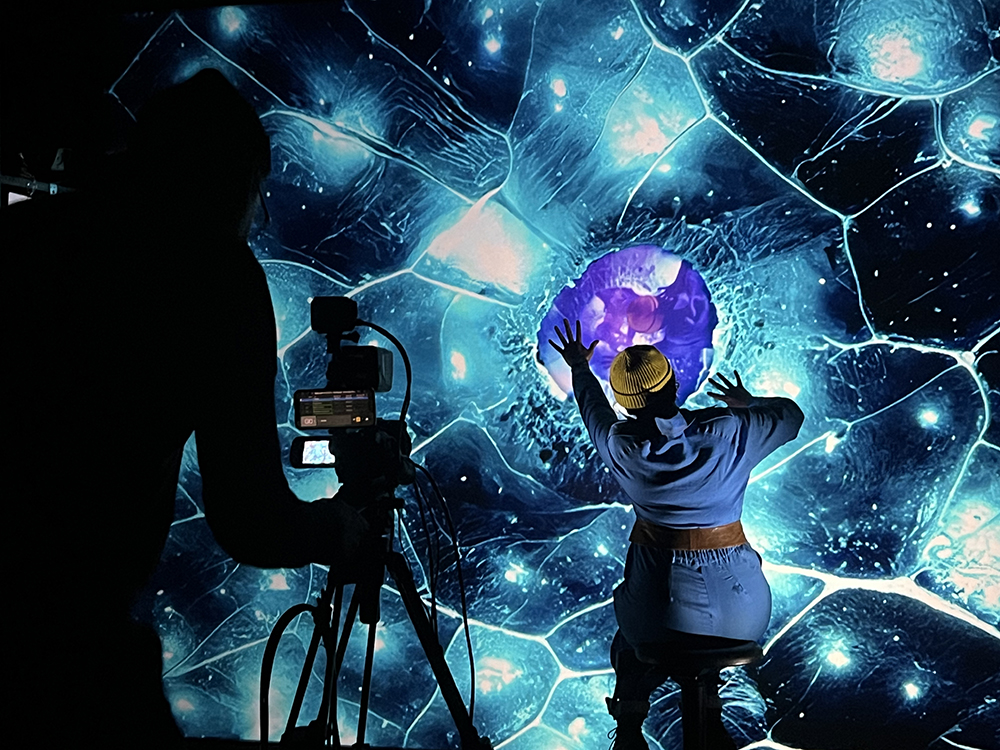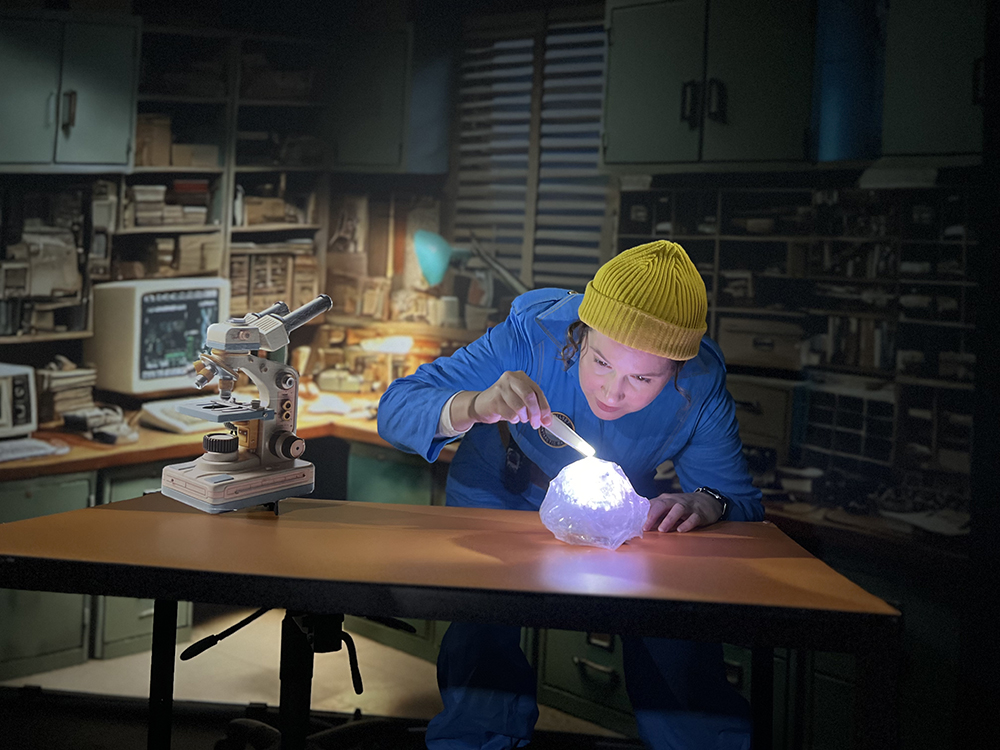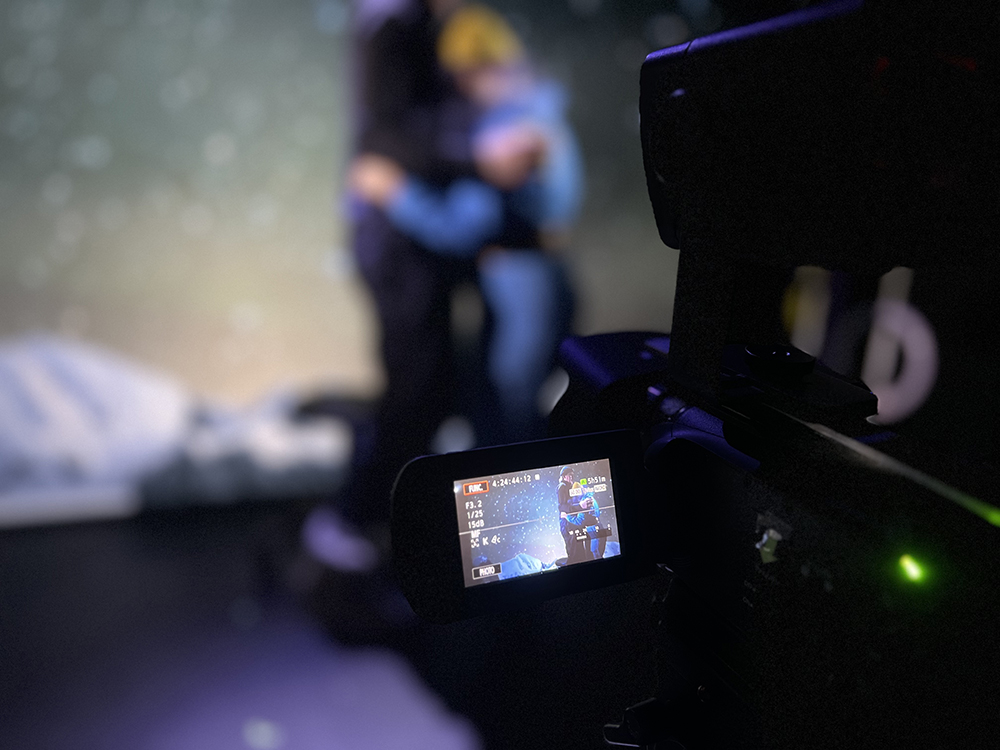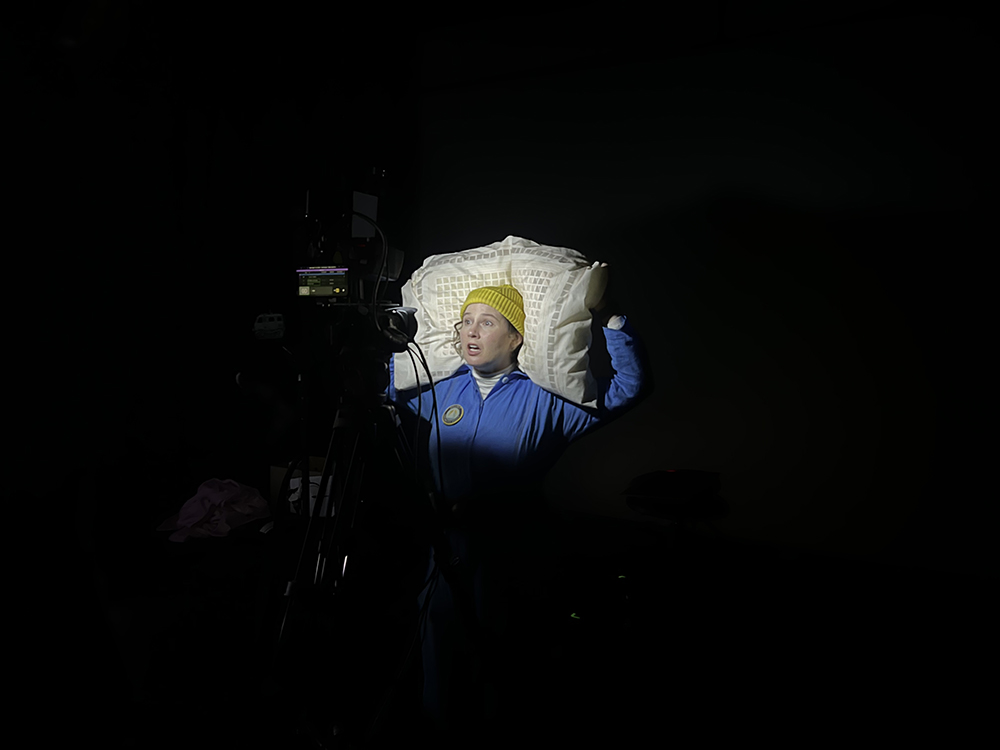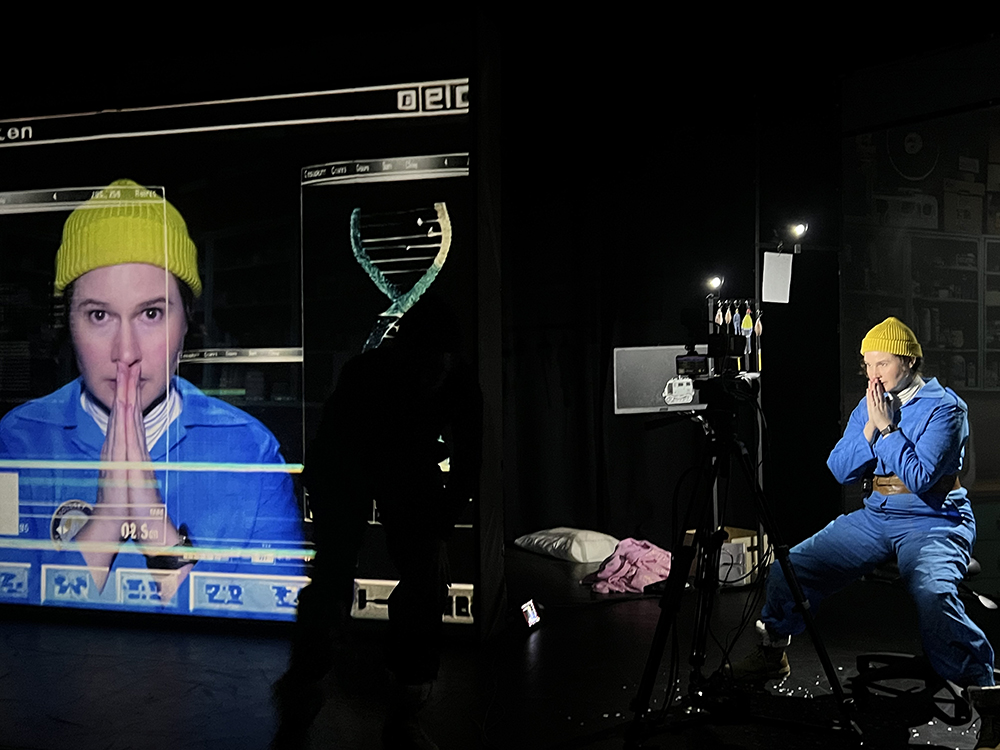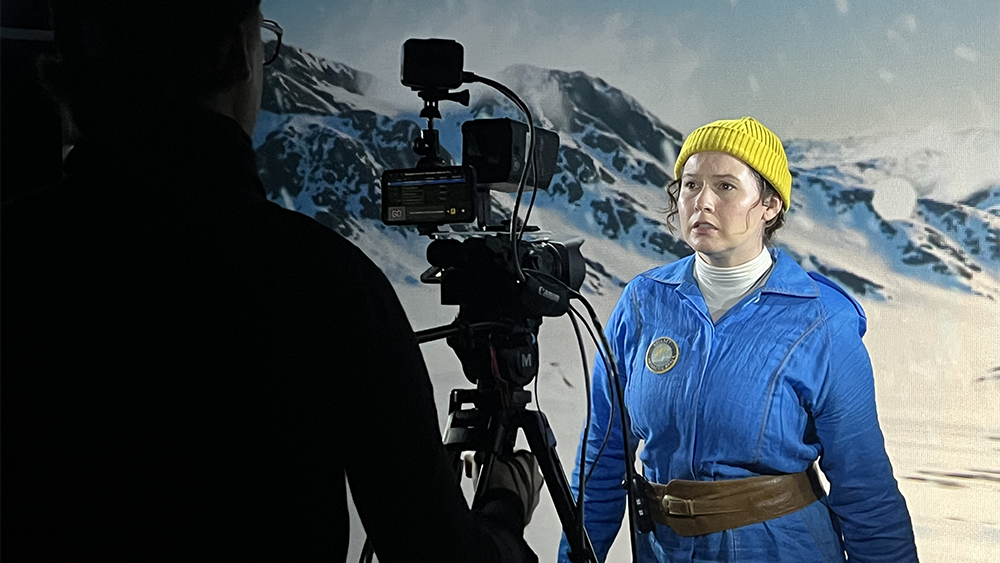
Review: Night Night at State Theatre Centre of WA
Night Night at State Theatre Centre of WA
Thursday, February 27, 2025
Every so often Perth throws up an extraordinary theatrical talent, a group or individual so far ahead of the pack that they shake up the scene. Be it an actor, director, playwright, or collective, the list stretches back a long way and includes such luminaries as Judy Davis, Gretta Scacchi, Matt Lutton, and Daina Reid, as well as companies like Winter Theatre and the original Swy Collective. The Last Great Hunt both sits comfortably within this tradition and rises above it. Their Perth Festival production, Night Night, is the most exciting and innovative piece of original theatre to come out of Perth since their collective’s production of Lé Nør (The Rain) in 2019.
On the lip of theatre’s cutting edge, Night Night deftly weaves cinetheatre, puppetry, animation, videography, and DIY digital magic into a madcap yet poignant live performance. The range of imaginative technologies at play is breathtaking; the audience could but wonder at what they’d do next, but the great strengths of the work are the way it comes together in front of your eyes and the serious yet optimistic insight it gives into the human conundrum.
Set in Antarctica, this dialogue-free, two-hander tells the story of a hapless scientist, Pip (Arielle Gray), dedicated to discovering the origin of life. Following an albino penguin, she is led into a hidden realm of pure energy from which she retrieves a small, curious, glowing creature—a stick figure of pure light (‘sticky’ as the creators call their puppet, though not in the show itself). This turns out to be the life force Pip has been seeking. Typically, as the world catches on, madness ensues, and Pip’s milieu expands and then disintegrates—though only up to a point.
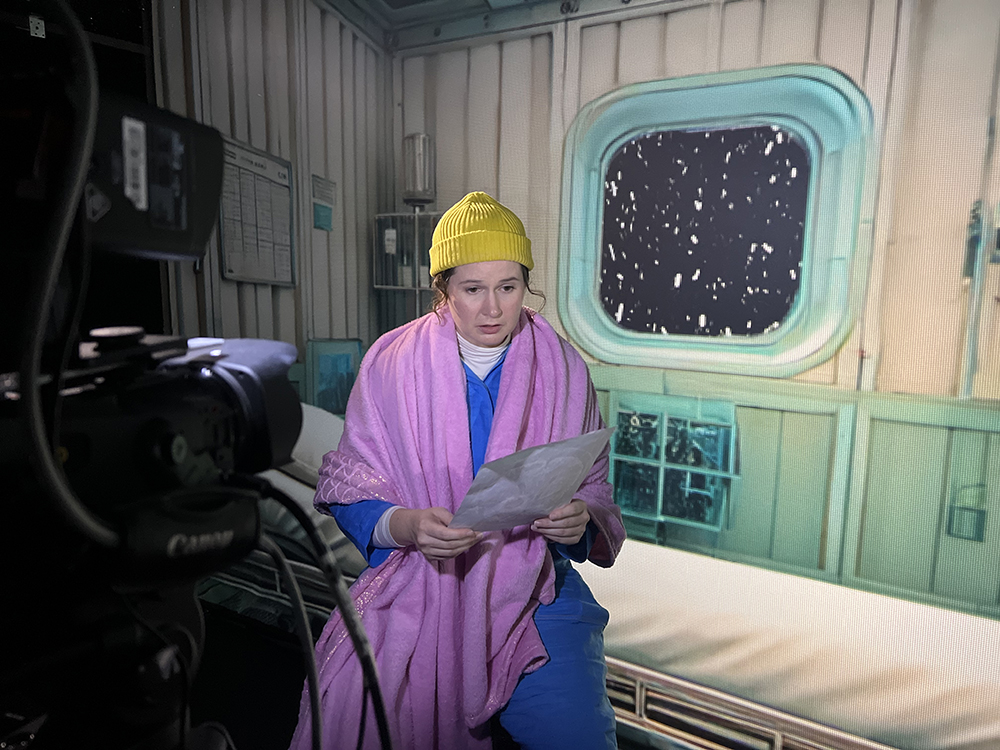
The action plays out on a divided stage. Stage right there is a giant video screen on which the completed ‘film’ is run. Stage left is the set on which the film is made, or rather, the play is acted. This second area includes a not-quite-so-giant rear-projection screen and a video monitor along with a table, chairs, a video camera, and sundry two-dimensional graphic props.
It is hilarious to jump between the images presented on screen and the action unfolding on the set. In the film, Pip may be staring down at her feet as she walks over the ice floe, while on the ‘stage’ Gray is lying on her back on a stool, lifting her feet up and down as the ice floe scrolls behind her.
This approach doesn’t merely draw attention to the artifice of the creation, that old modernist technique of self-referentiality, so much as completely pull it apart. It’s not deconstruction but the reverse, construction in action.
The second unnamed character is played by Tim Watts. He triples as Pip’s ice lab companion, the cameraman and puppeteer. Indeed, through the pre-recorded film sections, he plays every other background character in the story—in some sequences, there are six Watts in different disguises.
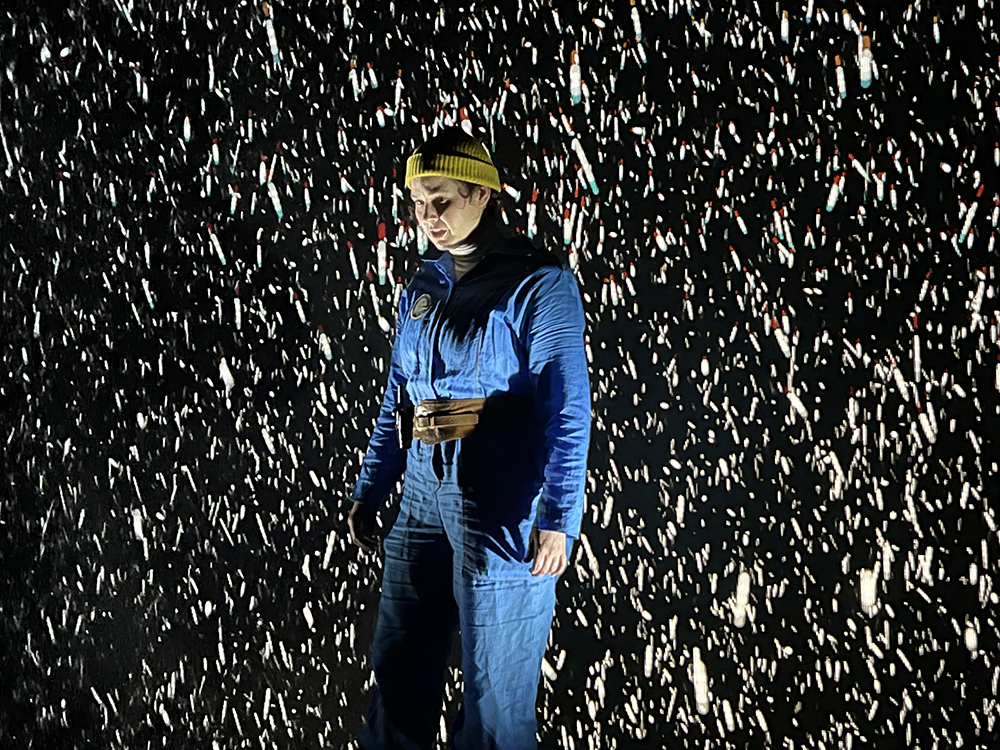
You would think that in such a technically complex work there would be half a dozen crew backstage pulling it all together, but all of the effects in Night Night are controlled by the two performers in the moment. Each has a hand-held remote control unit, designed by Watt’s father, that connects them to a computer. In some ways this makes it easier. Given the precision required to ensure the illusion of the film is perfect, it helps that the performers have the freedom to keep the technical effects in sync with the action.
This is so unlike the typical cinetheatre show where three-person film crews drag cameras, microphones, and cables across the stage to follow the actors. Granted, as much as possible, they hide the mechanism (black suits, crouched techs, stealthy movement), while the final effect, albeit still live, can be alienating. The actors typically perform to the camera, not the audience.
Night Night, in contrast, is light and simple. The onstage camera is static and small while the remote control units slip into a pocket. Vastly more entertaining, this opens the door to a more imaginative style of theatrical storytelling.
The look of the play is also original—a cross between Anomie animation and Ray Harryhausen’s early sci-fi movies, with a deliberately distressed look. The creators wanted the set and props to be dirty as though used and lived in. They vowed to eschew that pristine look you see in too many historical dramas where every item of clothing looks like it is being worn for the first time, every piece of furniture or vehicle taken straight from a meticulously cleaned museum. As one member of the audience astutely put it, “It was as though they were carefully paying homage to Stanley Kubrick’s 2001.”
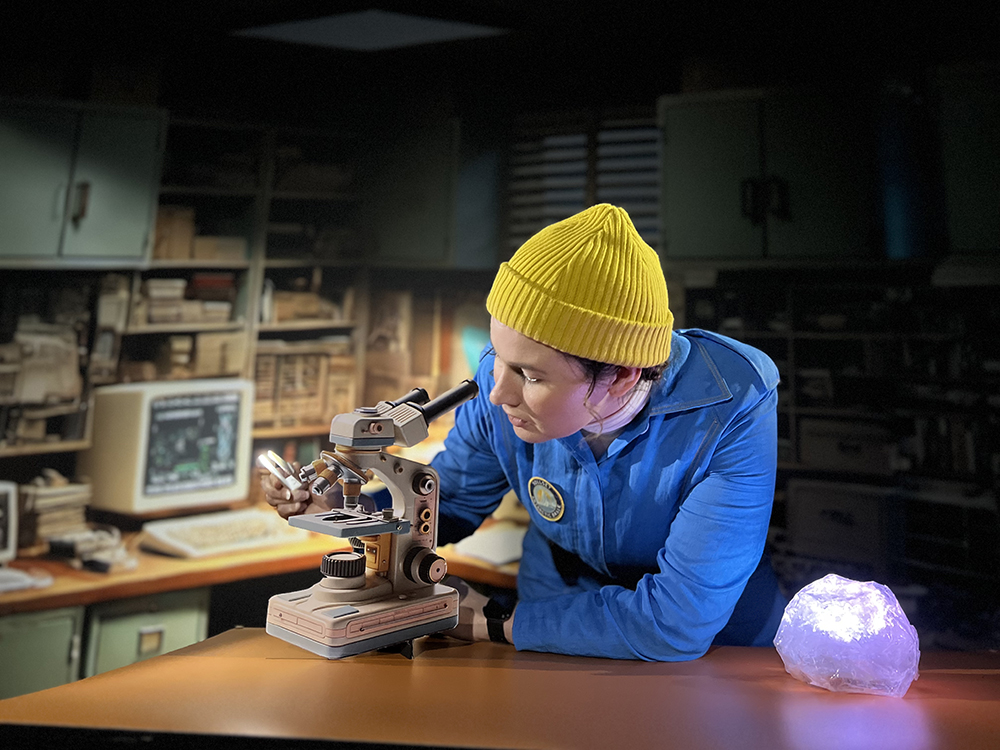
Night Night was conceived, created, and directed in an equal, three-way collaboration between Tim Watts, Arielle Gray and Luke Kerridge. Watts was also responsible for creating the multilayered projected images—the graphics, backdrops, and scenes that effectively constitute the set. Utilising both AI and Photoshop, he had to continually upgrade his skills to take advantage of these swiftly evolving technologies. As a result, on every level, it is a completely up-to-moment, state-of-the-art production.
The idea for the work arose in 2019 and since then has been through some six separate stages of creative development. All up, it took seven months FTE before the final work reached the stage.
Formed in 2014, The Last Great Hunt grew out of Tim Watt’s award-winning, one-man Fringe World show Alvin Sputnik: Deep Sea Explorer. The company is now a non-hierarchical, artist-led collective comprising five (originally seven) theatre makers: Gita Bezard, Adriane Daff, Jeffrey Jay Fowler, Gray and Watts. Over the past decade, they have mounted some half dozen productions and undertaken numerous tours around the country and the world. There are many more works currently in development.
Their mission statement sums it up perfectly:
‘We are creators, innovators, and above else, explorers. With each new theatre experience, we hunt for new ideas and new ways of connecting with our expanding audiences across Australia and the world. We create high-quality, rigorous, relevant, and entertaining original work. We make theatre on Whadjuk Noongar Boodja, honouring the rich traditions of storytelling that have been passed down through generations. Our shows feature an eclectic variety of forms, styles and experiences. We strive to give our audience an engaging, challenging, and moving night out at the theatre.’
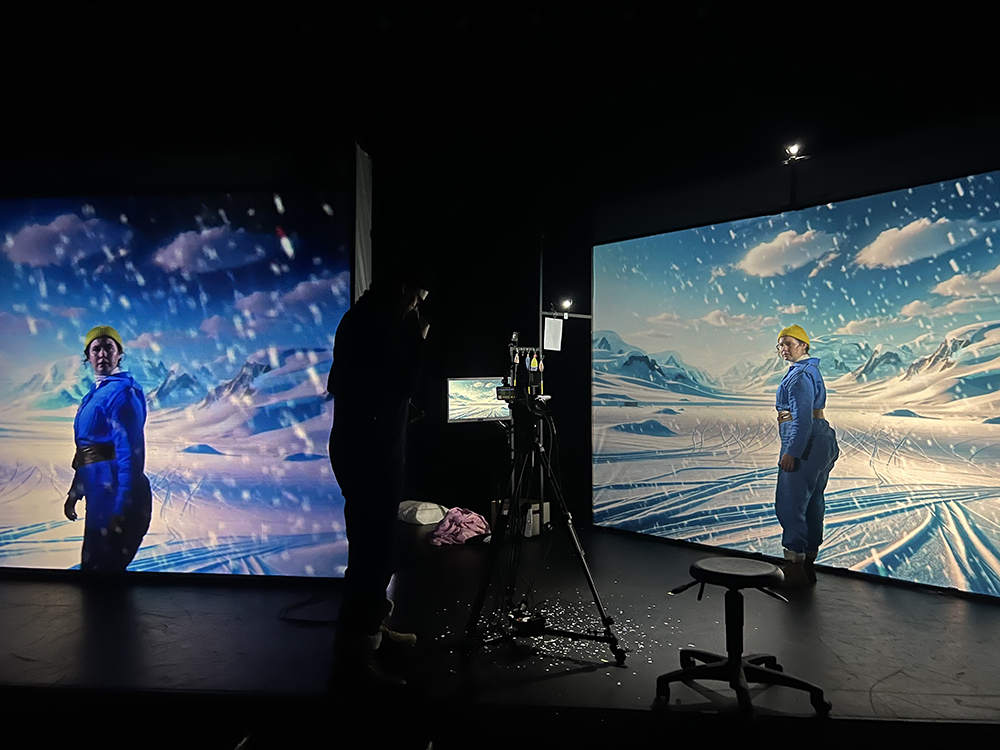
Night Night is all of these things in spades.
Although this is the premiere season, the show is already booked to tour to a dozen major centres around Australia. For a work originating in Perth, this is an extraordinary achievement.
Historically, plays developed independently here have one three-week season and, if they are lucky, a remount regional tour a year or two later. It has long been the dream of the Perth theatre community to present their work interstate and beyond. For too many theatre makers for way too long, all the time, effort, and imagination that goes into creating an original work disappears into the archives after that one short public season. It is heartening that The Last Great Hunt has finally cracked the formula.
This breakthrough has significance on another level in the history of Perth Theatre. Having found an audience beyond their hometown, Last Great Hunt has acquired the freedom to continue exploring and creating their own style of original work. Many previous Perth-based companies have started out with a grand vision to push the envelope of their art form only to be ground into a less adventurous, mainstream style of work. The forces of funding have too often meant that artists must abandon their creative ambition to reach a sufficiently large local audience to justify their support. That has long been the tragedy of the original arts in WA.
There is a certain genius at work in The Last Great Hunt. Or maybe, to use a term coined by Brian Eno, it is a case of ‘scenious,’ a collective creative virtuosity. The company must be congratulated for its groundbreaking achievement. Let’s hope it not only long continues to create work of the imagination and originality of Night Night, but also paves the way for other West Australian artists.
IAN LILBURNE

